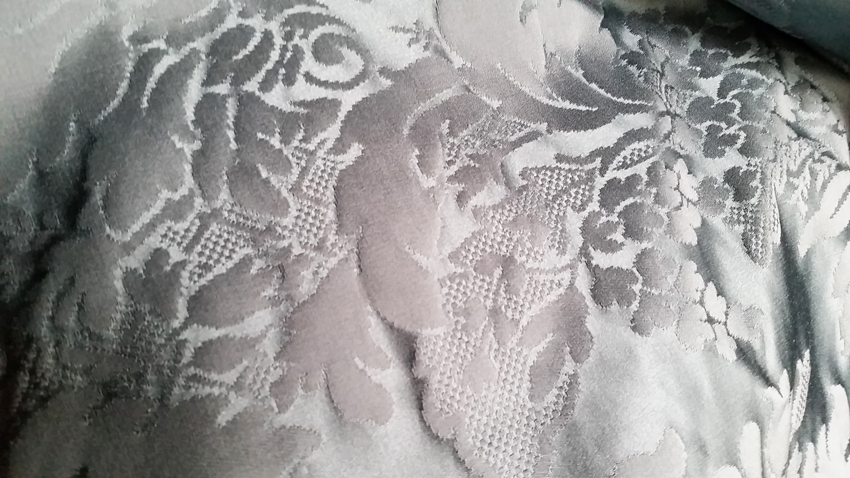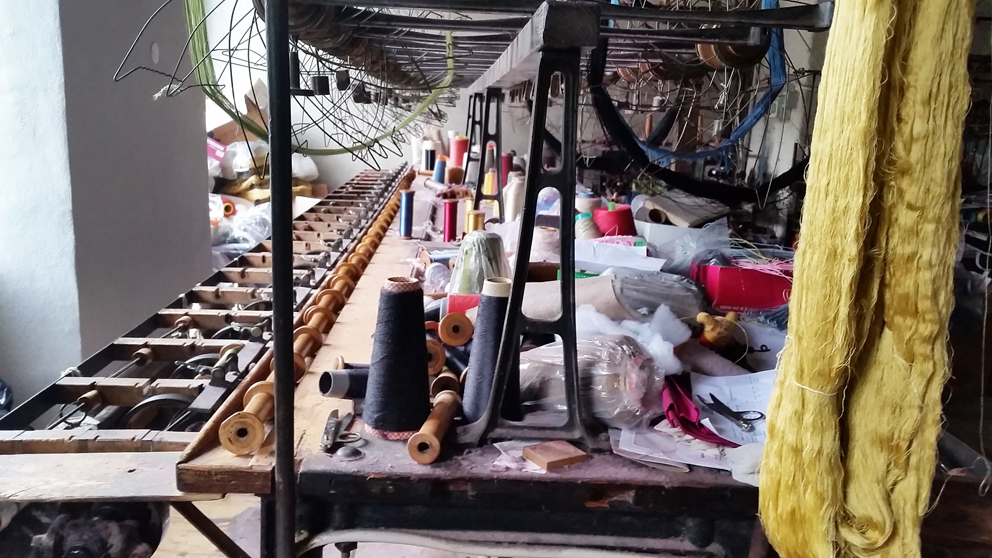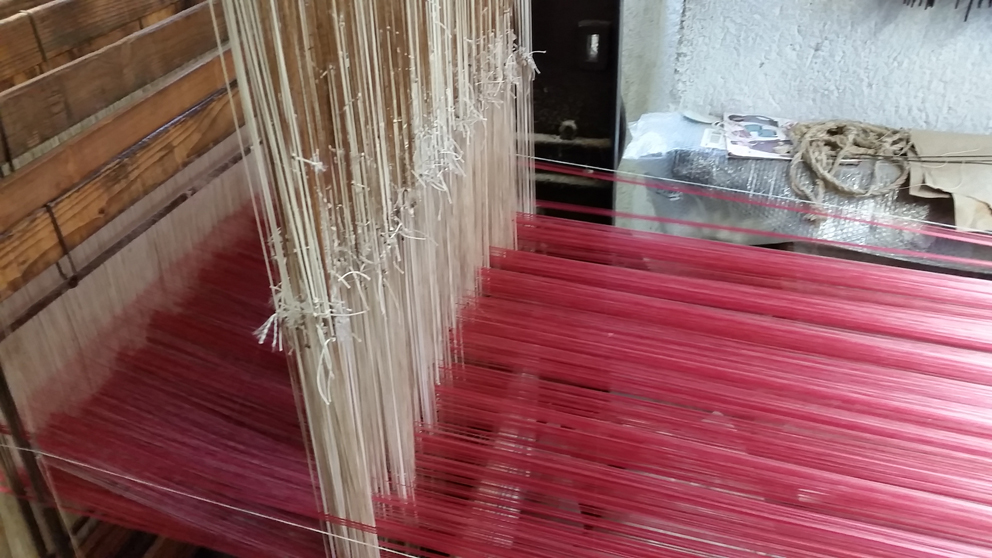Silk damasks in Lorsica
The manufacture of silk fabrics has been for centuries a main industrial activity in Lorsica, eastern Liguria. Today only one family goes on with this traditional art handed down from the fifteenth century.
Lorsica is a small, typical Ligurian village nothing to do with seaside Riviera, in a valley of Fontanabuona – known for its slate quarries and industry – with a long tradition of weaving precious silk fabrics: damasks, taffetas, silk shantung, macramé.
It is not certain the origin of this activity in Lorsica: some talk of Florentine origin, but it is certain that it was sponsored by the Republic of Genoa, which had here its manufacturing hotbed of fine fabrics that exported in all the European courts.
What is sure, in the period of the ancient Republic of Genoa, one of the most industrious activities practised throughout the territory was the manufacture of silk fabrics, that were exported all over the world. It was by no coincidence that the damask, very fine linen, silk fabrics mainly produced in eastern Liguria, were called Velours de Gênes by the French an Genoa Velvets by the English. in Lorsica in the hinterland for damasks, and in Zoagli on the seaside for velvets, are the two towns where this type of craft was mainly produced and known and that survives even today with the same handicraft passion.
This ancient craft flourished in the XV century and a small Museum dedicated to damask (Museo del Damasco) was fitted out in Lorsica in 2007 to prevent it from dying out.
The Museum has a collection of the fabrics on display including objects of great historical and artisan value, such as a delightful embroidered cope from the parish church in the town. Here it is possible to know the original tools and equipment – large wooden weaving looms and used to create these true industrial works of art at the historical family-run business De Martini in Lorsica, which is still active today, since this handicraft industry arrived in this small town in the sixteenth century, when virtually every family had its own weaving, and many also cultivate silkworms. Today remains the Tessitura De Martini, conducted by the family, which defends the history and quality of products using traditional techniques.
We visit the museum and the Tessitura, to know the lines of this story, and where to see samples of the production in the centuries: Stefania De Martini, owner with her husband in the same weaving craft, guides us.
The deserved fame damask appreciated in the world for the brightness of the tissue, for the perfection of the drawings and for the solidity and compactness of the fabric, is due to the high number of warp threads, which gives a very valuable product, but requiring a very long machining and precision job. Just to give an indication, it takes a month of preparation and weaving, to produce one inch of cloth. It seems an exaggeration, but just observe all the necessary operations and the same hand jacquard looms, to believe it.
Jacquard looms, that although hand-operated here are considered ‘modern’: before the invention of Monsieur Joseph Marie Jacquard draws were done by hand, and it was a specialty of the Lorsican people who receives high demand from weavers in Milan and Como who tried to take them away. Their specialty was the difficult know how to skillfully maneuver a lot of wires, just like puppeteers. The loom was driven by the weaver with two helpers : standing over the frame, they cranked the device for the formation of the pitch between the warp threads reading from a card draw that contained the checkered pattern of the fabric.
The classic designs are palms, roses and parsley, unsurpassed for their precision, as well as beautiful and precious as they are, in lampass, the Napoleonic bee in a blue field, streaked Louis XVI style and the love knots: manufacture “Sons of Demartini Giuseppe” has today more than 300 exclusive draws that the family has been handed down its strictly hand fabrics since 1500, a product that industrial looms fail to imitate, as easily noticed by the difference to the touch and the luminous sight. Today the ‘new’ 12 meters long loom, can produce – after the long preparation – 6 meters of fabric per day. The clients know this and have patience.
For those who want to follow the different steps in the production of damasks can give a look to this video, the understanding of which it can sometimes be difficult, as the dialogue is in Genoese language.










